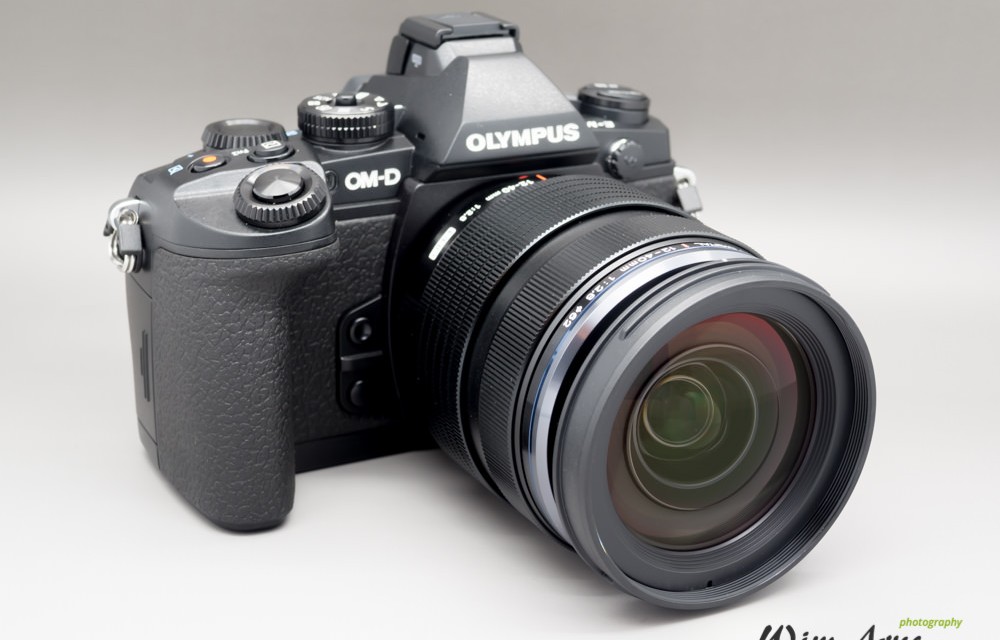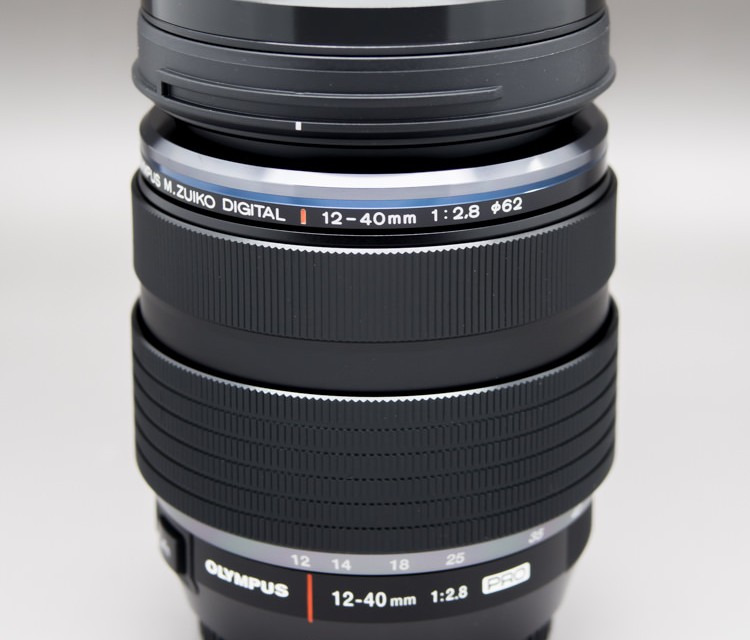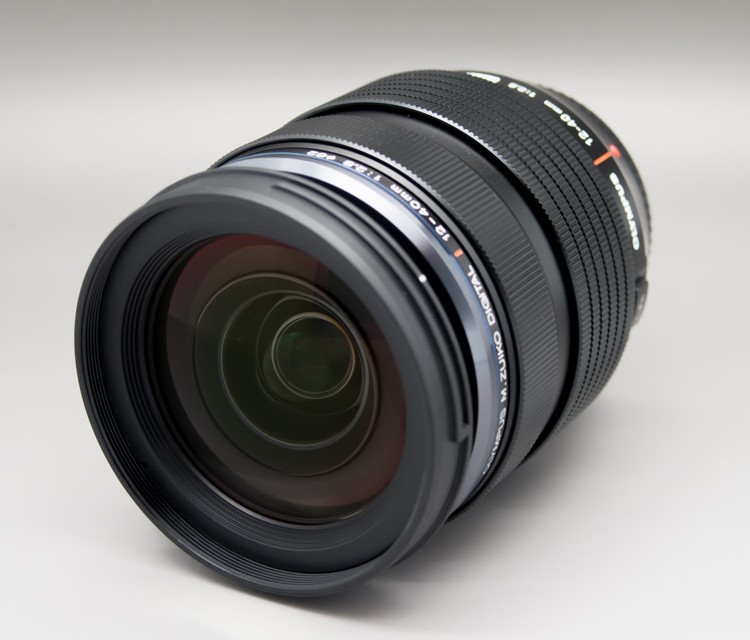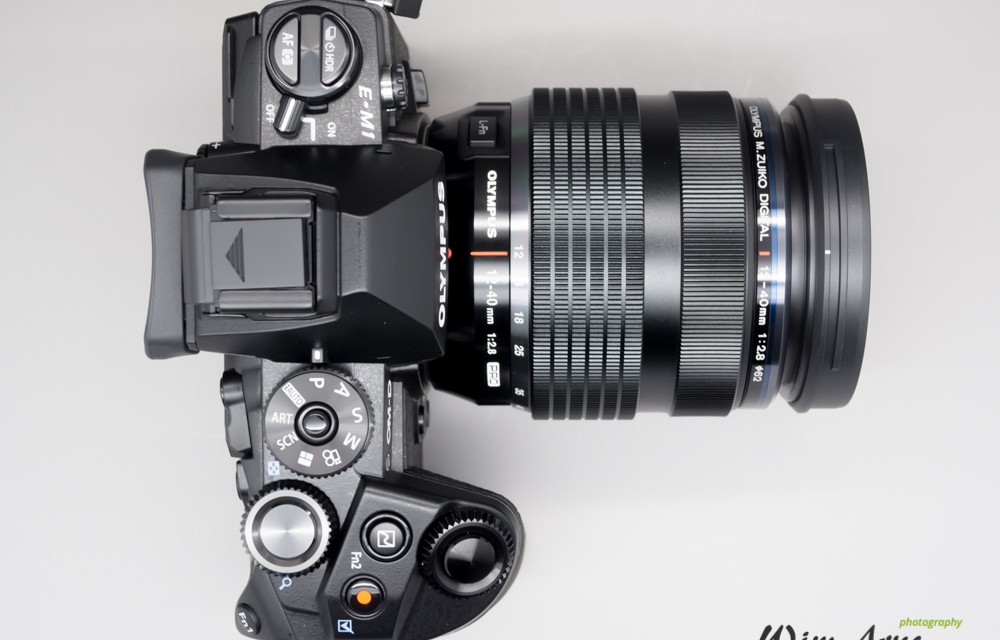Olympus ED 12-40mm f/2.8 PRO review
Introduction
The Olympus ED 12-40mm f/2.8 PRO is their first lens of the new Pro range of zooms for the micro four thirds sensor format. Because the equivalent in full frame format would be around 24-80mm, we call this a standard wide to medium telelens. Most noteworthy, it has a constant f/2.8 maximum aperture throughout the zoom range and is fully weatherproofed.
In this review, I’ll be testing how it performs in real life and some studio tests.
Build Quality and Features
The Olympus ED 12-40mm f/2.8 PRO is made from high-quality plastics with a metal bayonet in addition to rubber seals to prevent any dust or moisture entering the inside. Both styling and finish make it an ideal companion with the Olympus E-M1, with excellent balance (only weighs around 380 gr) and a firm grip.
This lens has an interesting feature that allows for quick switching to manual focus when you slide the focus ring back towards you. This sliding ring does take some getting used to, as I found myself changing to MF once too often at first without knowing why. But after a while, you do get used to it.
Minimum focusing distance is only 20 cm throughout the zoom range, most noteworthy allowing this zoom to be an excellent choice for portraiture too.
Olympus ED 12-40mm f/2.8 PRO sharpness and distortion
The M Zuiko Digital ED 12-40mm f/2.8 PRO performed well in my tests. I should mention that I don’t have a protesting facility like DXO, but I always like to check my copy a lens so that I know how it performs. I use a remote to eliminate shake, capture RAW and export to jpeg without corrections in Lightroom.
Although you can’t get the same depth-of-field with a micro-four-thirds camera as you’d get with a full frame sensor, this is not a real problem for most photographers. Yes, images can look fantastic with an excellent lens like this. Although you won’t be able to print as large, there is still enough information captured for most jobs, including magazine prints. That is if your clients are not too snobbish when it comes to what output they accept.
Sharpness, Distortion and vignetting 12mm
- 12mm f/2.8 center
- 12mm f/2.8 corner
- 12mm f5.6 corner
- 12mm f/11 corner
There is some vignetting and barrel distortion and 12mm, but nothing too complicated. It’s easily remedied with in-camera corrections or in a RAW editor of your choice. At f/2.8, it’s already quite sharp across the frame, reaching peak performance at f/5.6 where it’s sharp across the frame.
Sharpness, Distortion and vignetting 17mm
- 17mm f/2.8 center
- 17mm f/2.8 corner
- 17mm f/5.6 corner
- 17mm f/11 corner
Barrel distortion has decreased at 17mm and also has vignetting, but you’ll still need to apply corrections for particular types of images like landscapes and architecture. Aperture-Sharpness performance is equal to 12mm.
Sharpness, Distortion and vignetting 25mm
- 25mm f/2.8 center
- 25mm f/2.8 corner
- 25mm f/5.6 corner
- 25mm f/11 corner
Barrel distortion has almost disappeared at 25; vignetting is similar. I did found my copy to be a bit less sharp at 25mm than other focal lengths.
Sharpness, Distortion and vignetting 40mm
- 40mm f/2.8 center
- 40mm f/2.8 corner
- 40mm f/5.6 corner
- 40mm f/11 corner
Tiny distortion at 40mm and a similar performance regarding vignetting and sharpness like at 12mm.
Real-world use
Using a zoom is always a compromise between quality and convenience. If you’d want optimal quality, you’d use a prime lens and Olympus certainly has a range of fantastic prime lenses. To name just a few examples: a 12mm f/2 wide angle (minimal distortion and very sharp corner-to-corner performance) to the excellent 75mm f/1.8 portrait lens with an attractive bokeh.
A zoom will never have the same performance as a task-specific prime, but it I often prefer it in situations where you don’t fully know what to expect. At the same time, I was testing the Olympus ED 12-40mm f/2.8; I was also trying out the Sony/Zeiss FE 24-70 f/4 on a Sony A7.
Although it’s not as fast, you’d expect similar performance, but I preferred the Olympus. This preference might have something to do with the fact that the OMD EM1 is overall an easier to use a camera with a better viewfinder and faster AF. But it also goes to show that there are zooms that feel good and renders sweet images and others that mainly fail.
Outdoors real-world use
The M. Zuiko ED 12-40mm f/2.8 is an ideal lens for traveling, weddings, and overall reportage jobs. As I stated before, it’s already quite sharp (even in the corners) at f/2.8, and a lens like this always goes well with shooting in iAuto mode. The camera automatically sets aperture according to lighting conditions but is, of course, unaware of sharpness performance at different apertures.
In Auto mode, this can be a big problem with lenses that don’t have a uniform performance across the range like in the case of the Sony SEL2470z, which is per example sharp only in the dead center at f/4. The Oly 12-40 does a much better job, so you can set and forget here, which is critical for split second photography.
Indoors real-world use
Perhaps surprisingly, this is a very useful lens for studio shoots too. This fact might have something to do with the new tethering capabilities of the Olympus O-MD E-M1 in the version 2.0 firmware update, but Olympus certainly know how to make photography equipment that works well in real-life use. The Excellent overall performance of this lens means you have lots of creative freedom regarding composition and AF is very fast on the EM1 and EM10.
First of all, I’m not that bothered with vignetting (although quite noticeable) or barrel distortion, as you can quickly correct these things in Lightroom.
The Olympus ED 12-40mm f/2.8 PRO also renders sharp images with a decent degree of detail and dynamic range, so no problem recovering some shadows and turning down highlights in post processing.
Conclusion
Olympus have decades of experience in camera and lens design, and they continue to improve their range of cameras and lenses for the micro-four-thirds system. It seems like every time you think they’ve reached the limits, they come up with an innovation or improvement that breathes new life into the system. And when it comes to ease-of-use, functionality and price/quality, there is no beating them in my opinion.
The Olympus ED 12-40mm f/2.8 PRO is another example of this. It probably looks expensive (to some) compared to some of their MFT cameras, but for a decently sharp f/2.8 zoom lens that performs well across the range, it isn’t. We live in a world where you seem to have to upgrade every year, now to a full frame camera, next year it will be medium format sensors and so on. But few manufacturers deliver products as usable as Olympus does.
Yes, it’s true that you’ll need to do some basic corrections to get the best out of the Olympus ED 12-40mm, but it does deliver what it says on the tin. That is something rare nowadays.









Nice review Wim! I’ve had this zoom for a couple of months now and it never leaves my EM5.
Helllo Wim, I live and work in France and have just changed my Nikon gear for the EM1 with Oly lenses, among them the 12-40, which I find great for general work and even studio when you close down. I never thought I’d leave the DSLR, but mirrorless in general and Olympus, Panasonic and Samsung are changing the photographic world.
Hi Steinar, I totally agree. The EM1 is excellent for studio work, and as long as you don’t need to crop too much or print beyond magazine size, it’s a great camera.